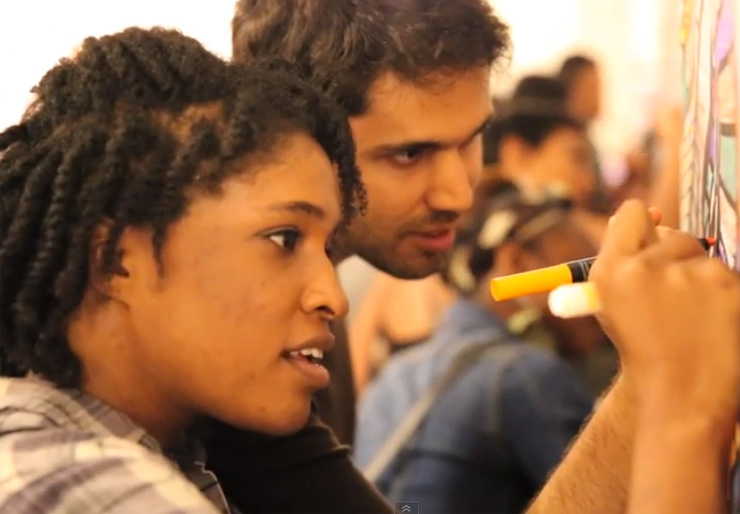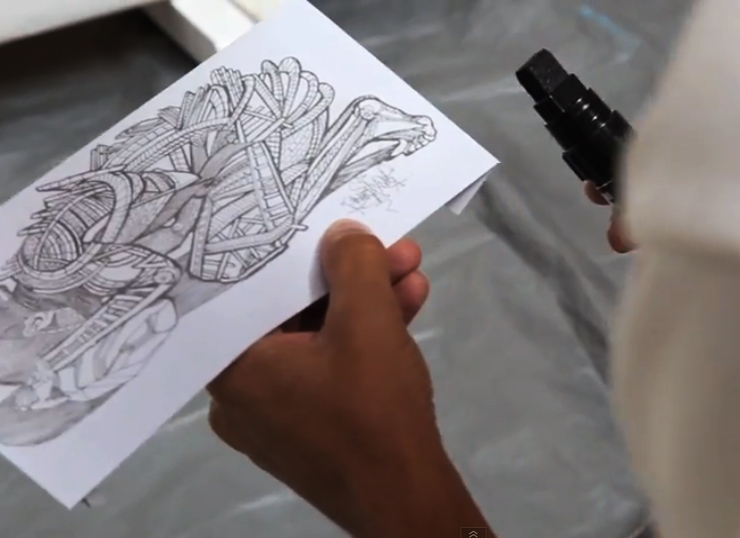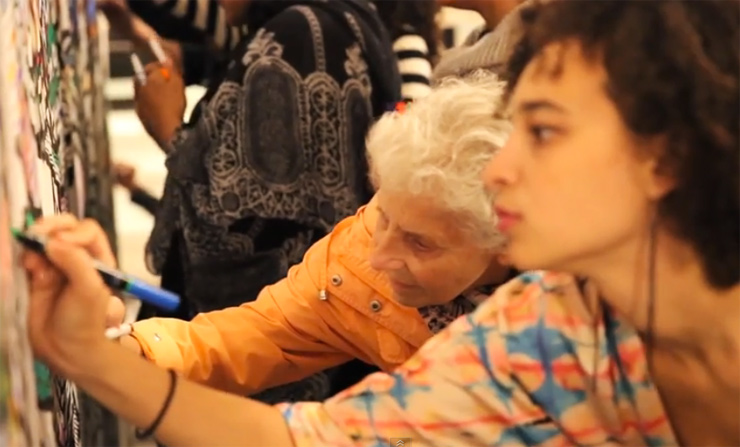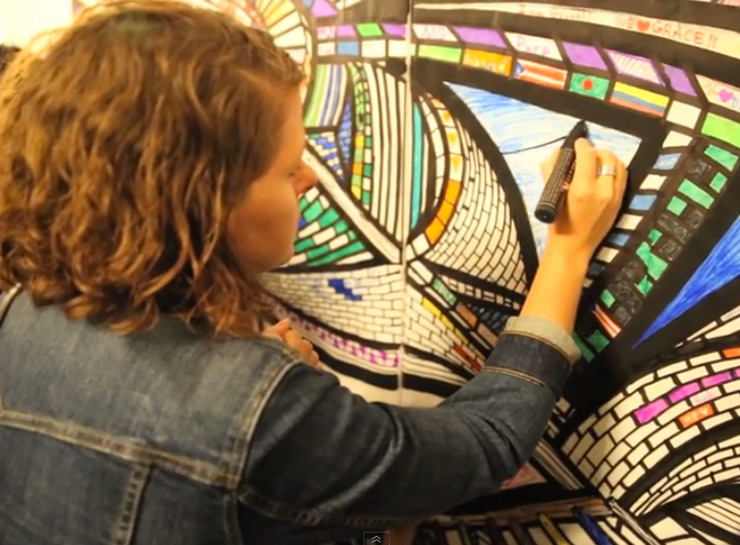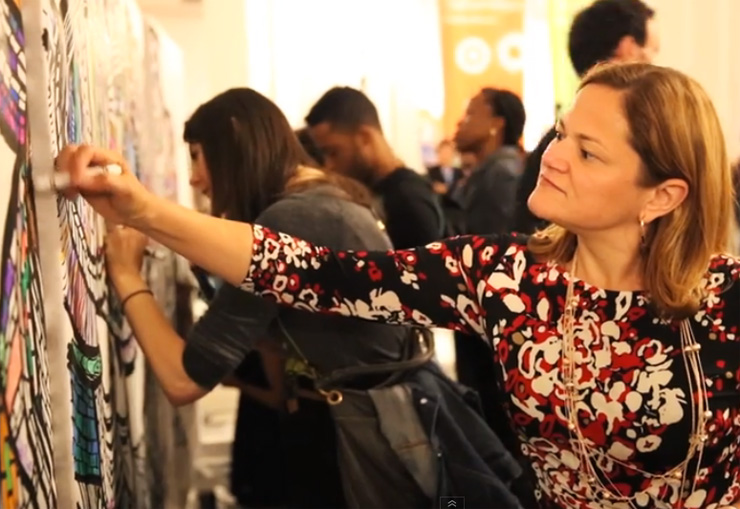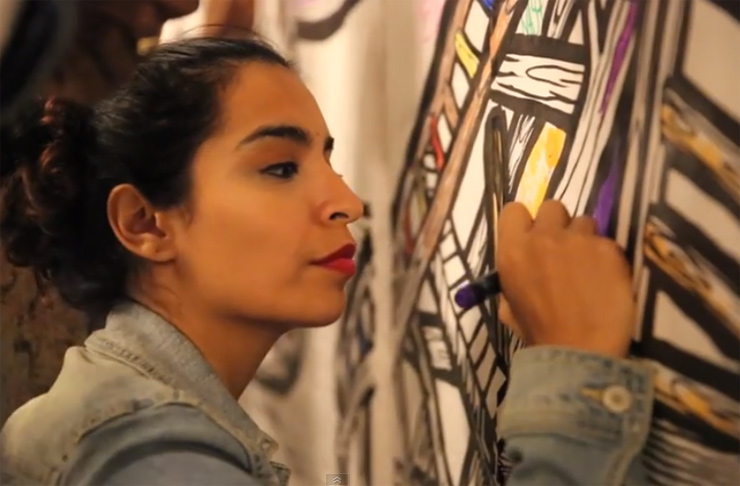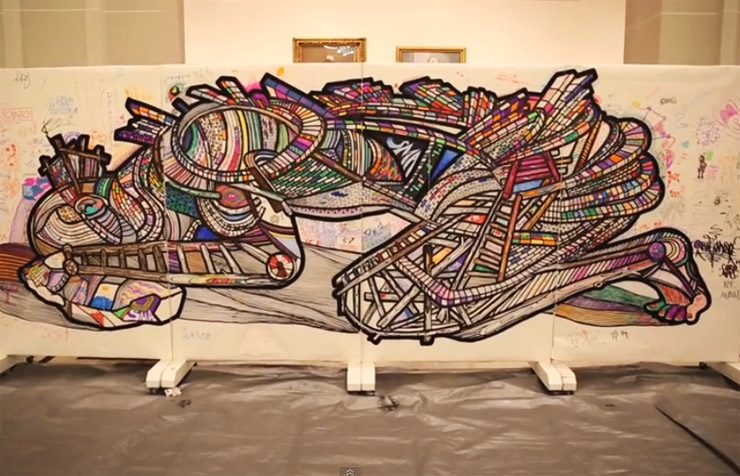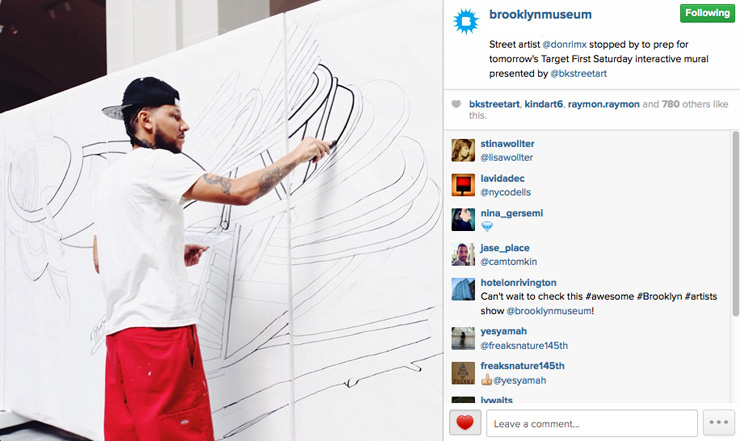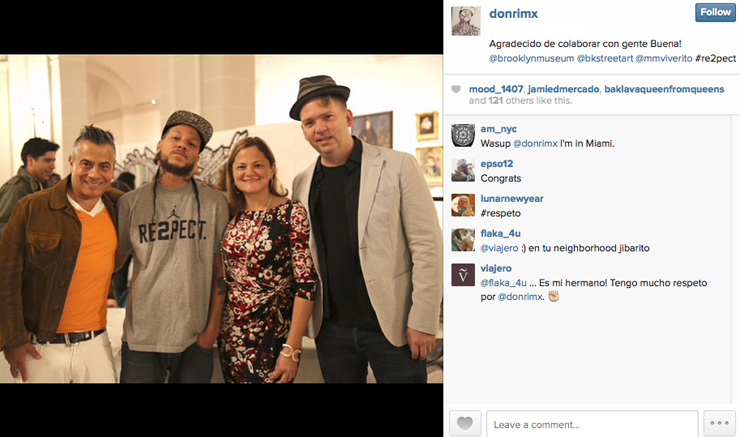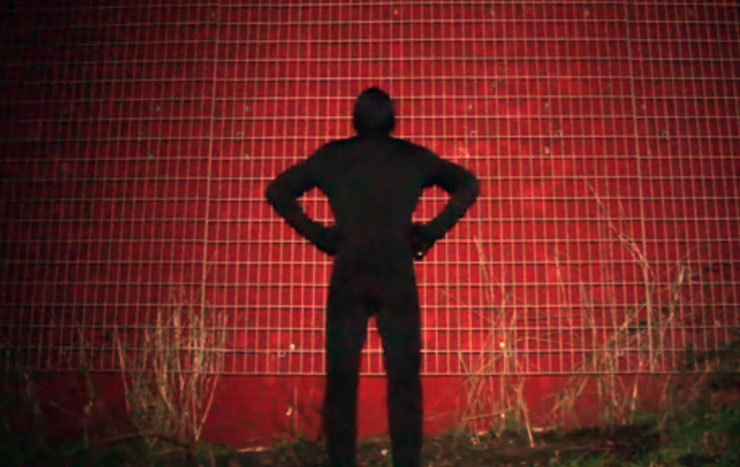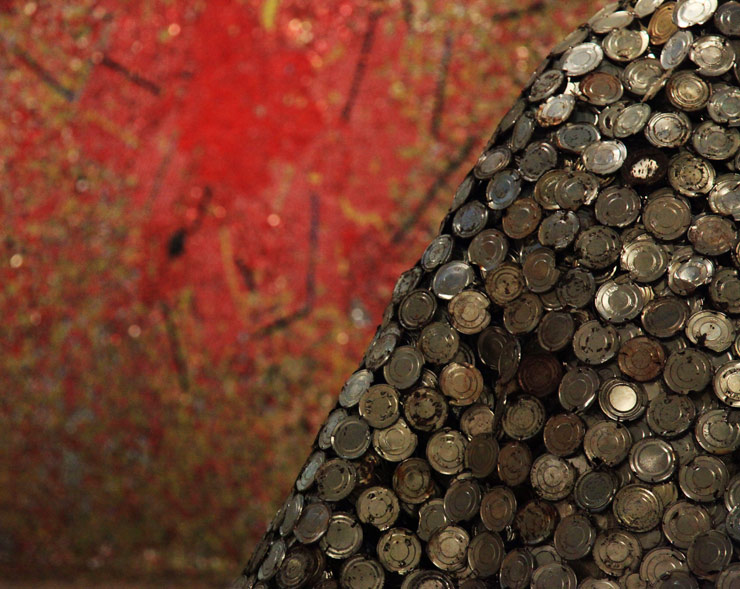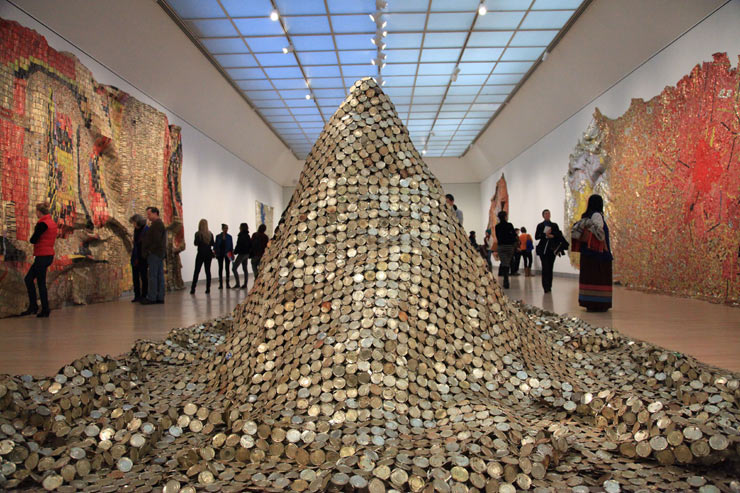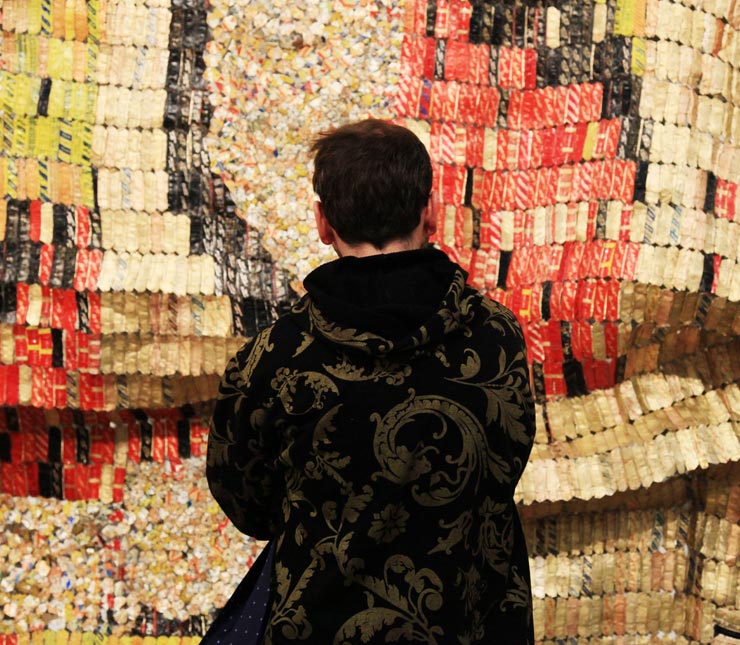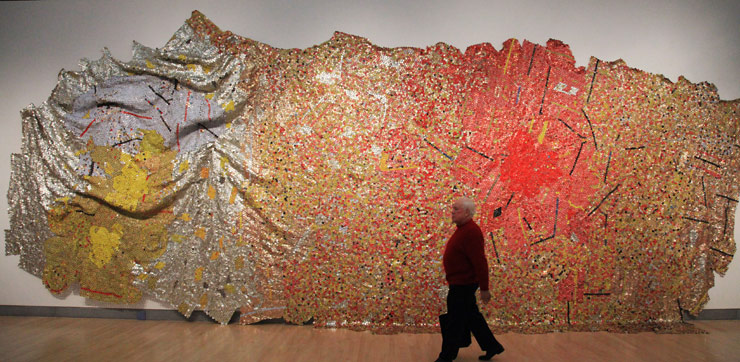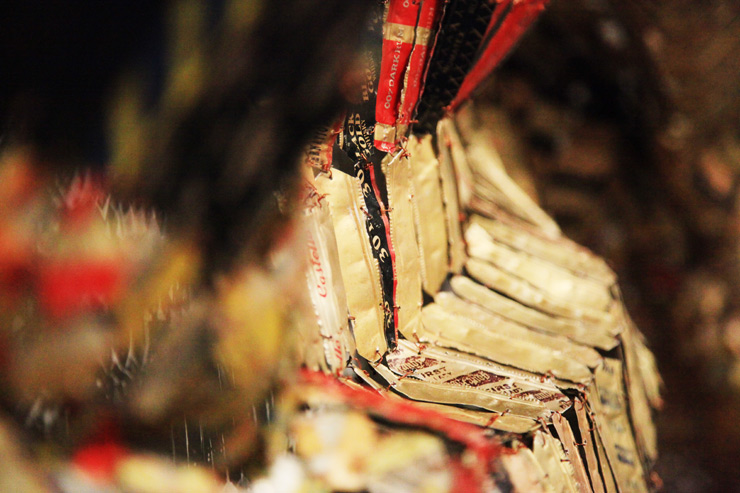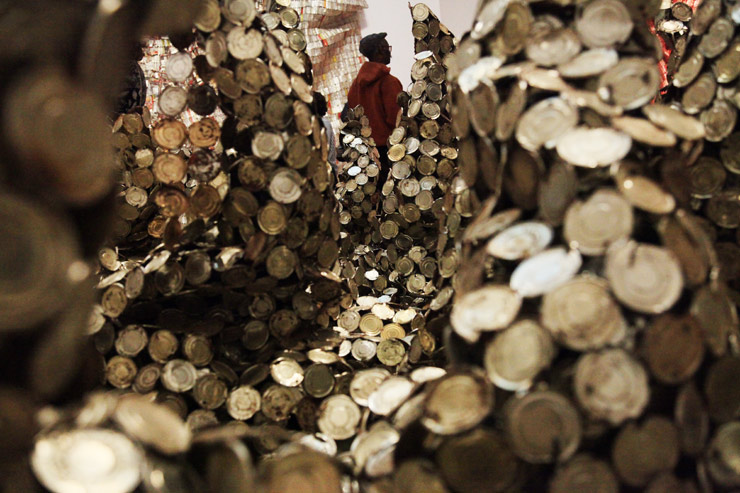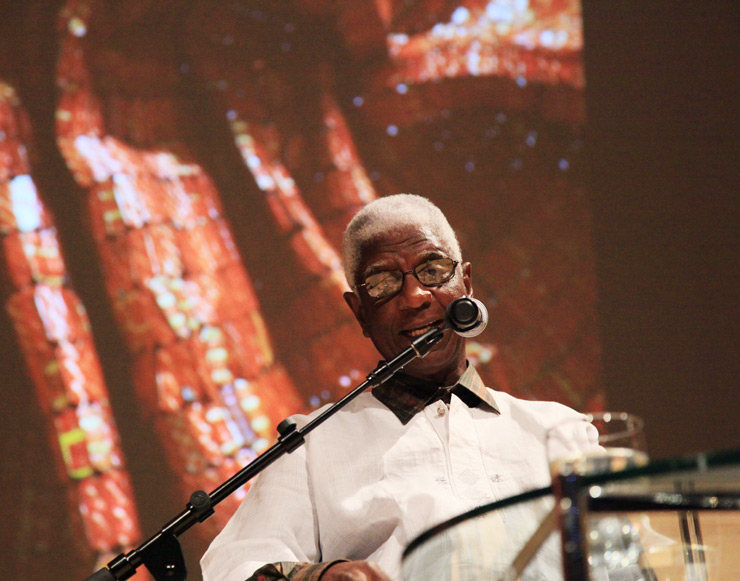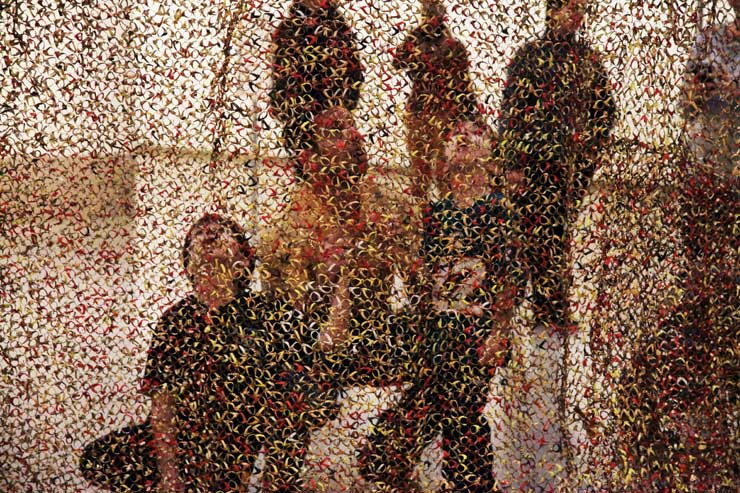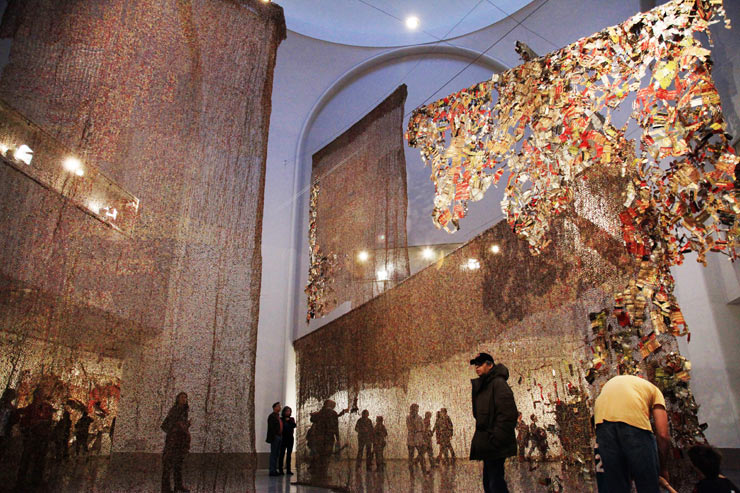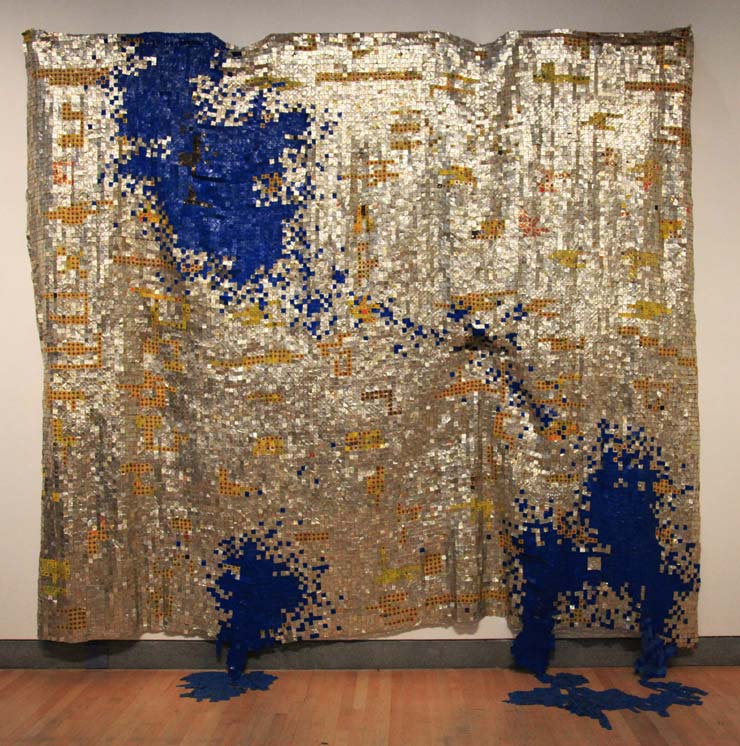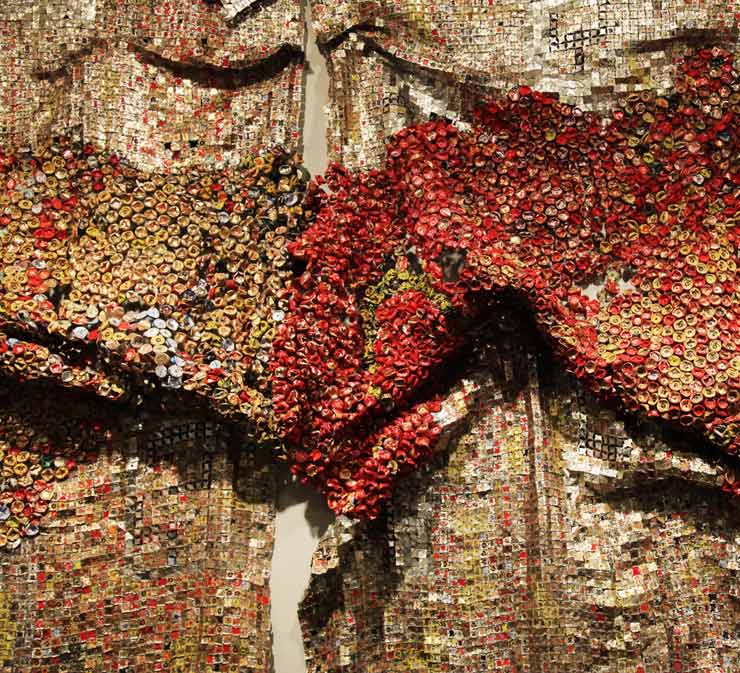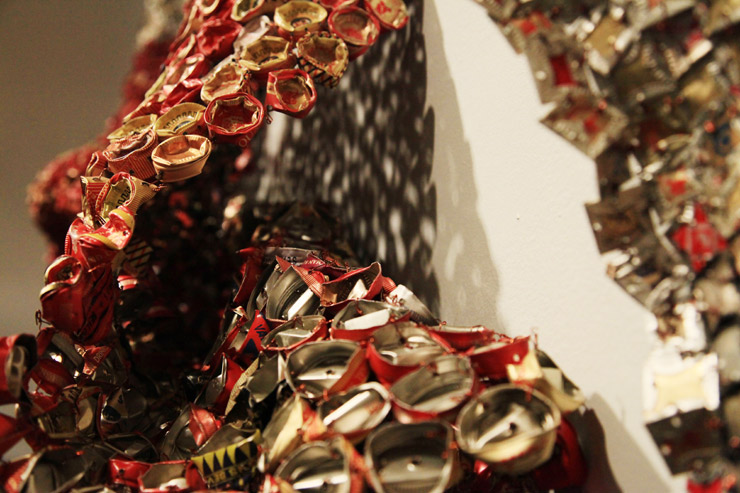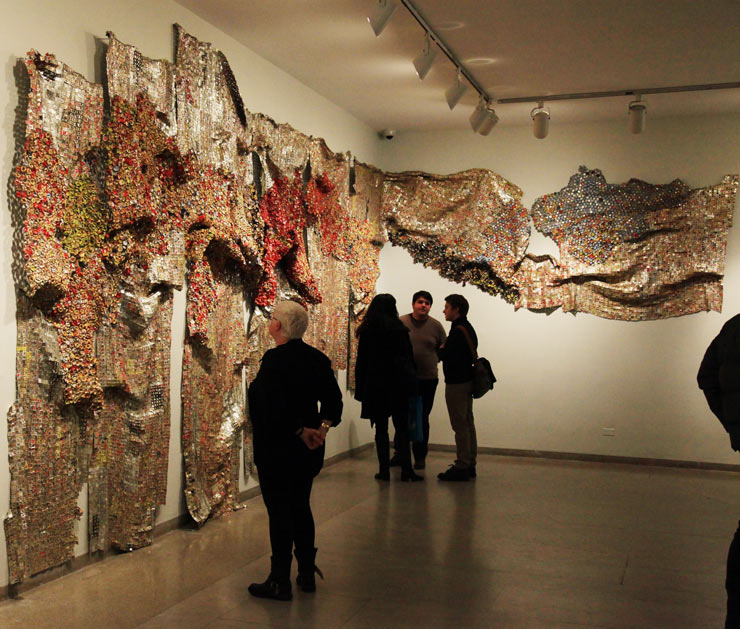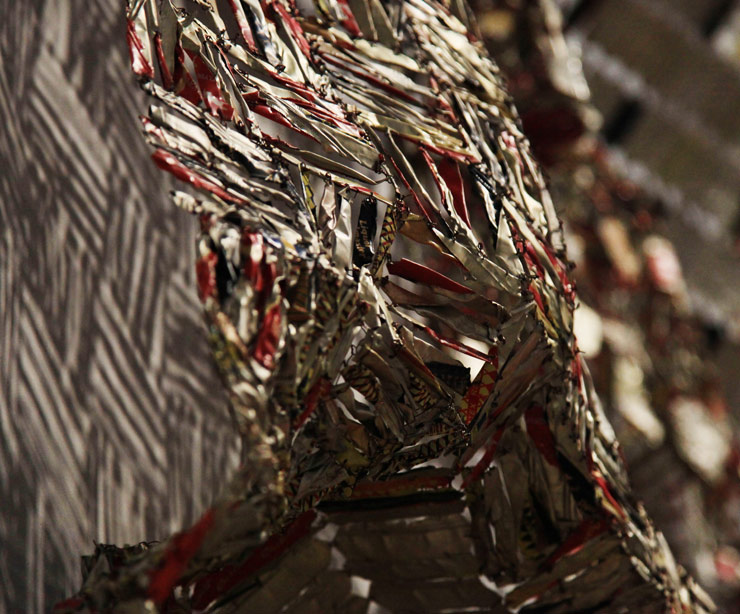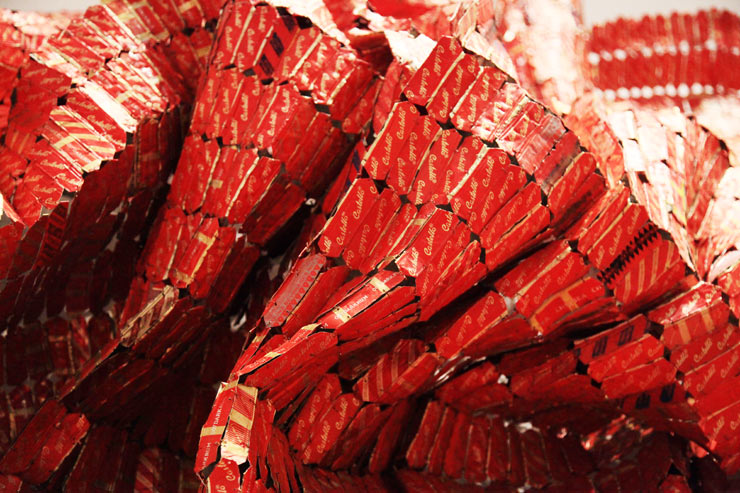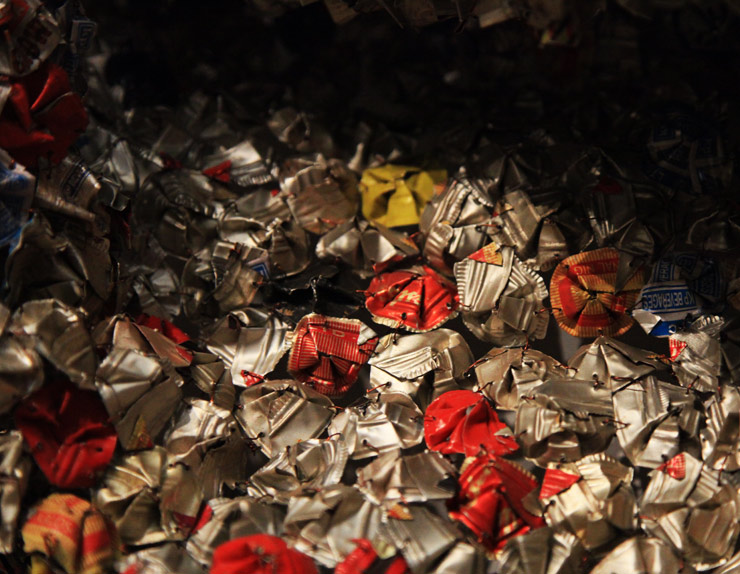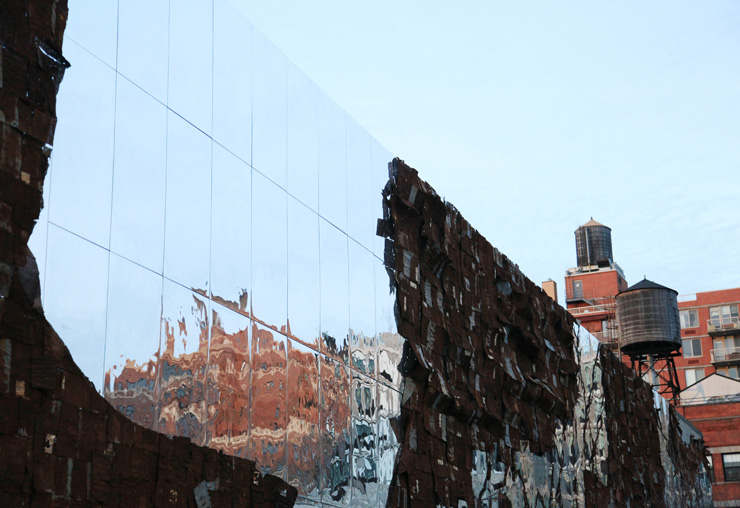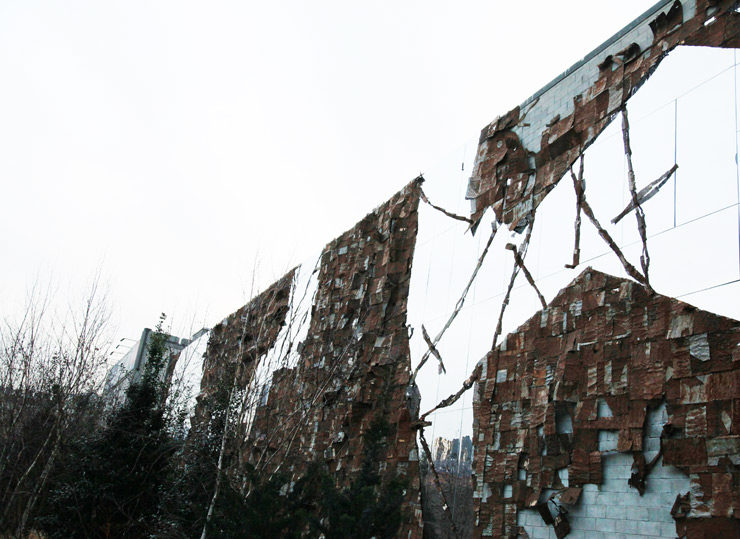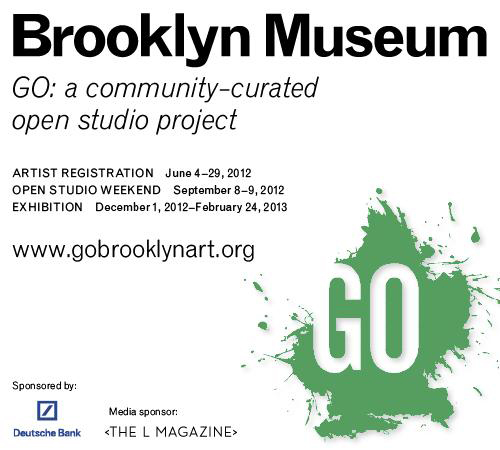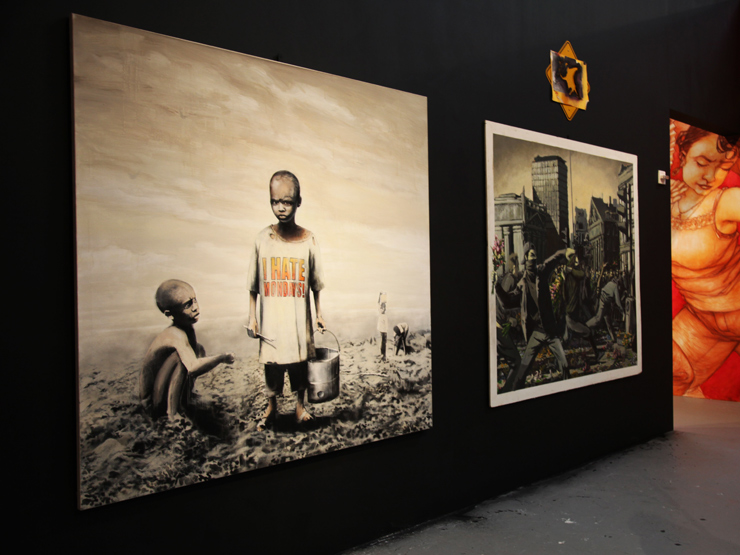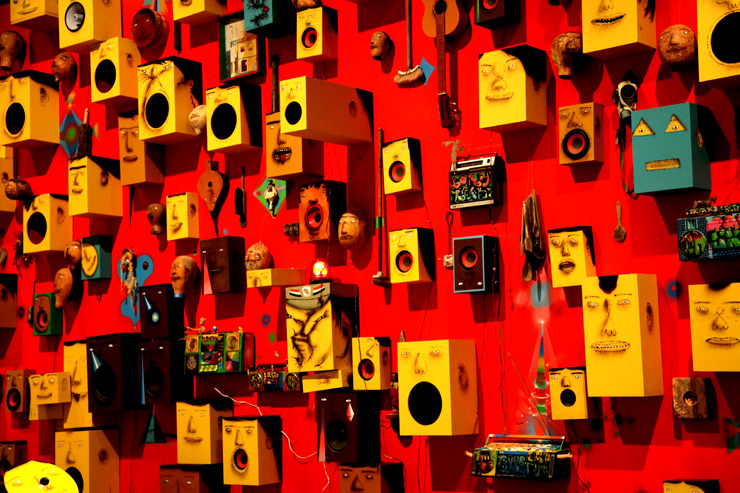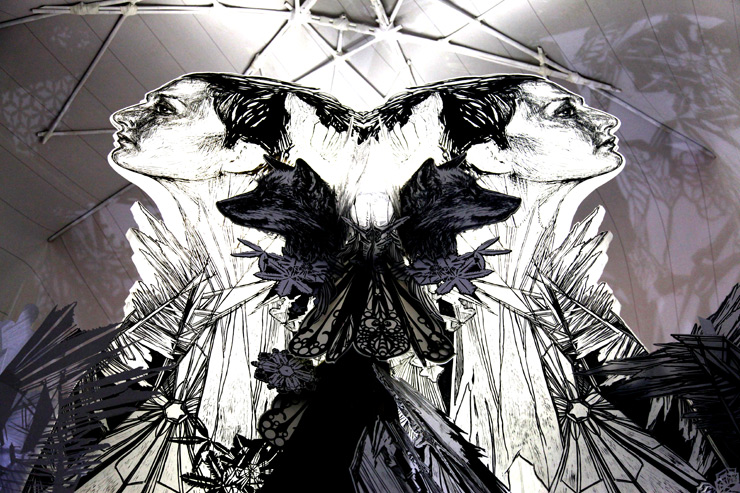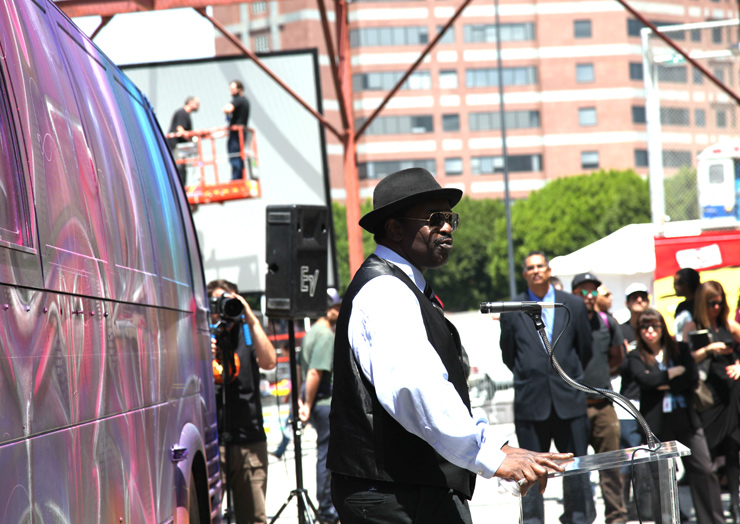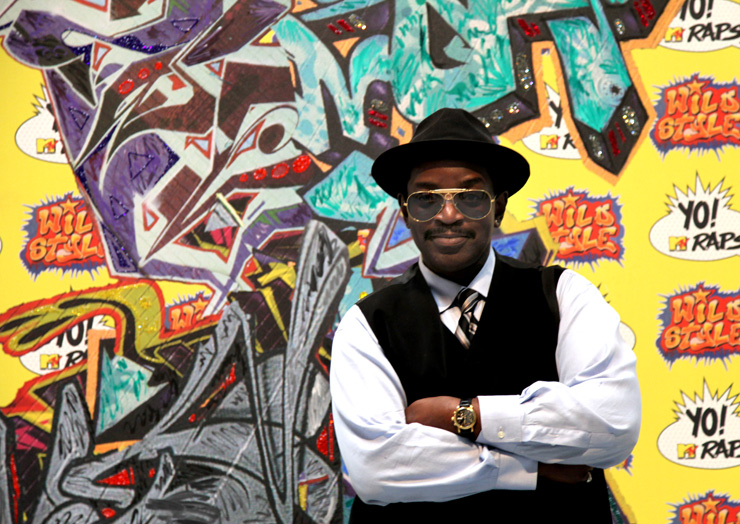1978 and 2012 seem closer to one another than ever right now when we look at the blossomed Street Art scene in cities around the world. More than 30 years after Keith Haring moved to New York as an art school kid at the School of Visual Arts, a new generation of art school kids consider it almost a birthright to take their work directly to the street. Right now feels like an excellent time for Brooklyn to spotlight this study of his first four years in the city that blew his mind and inspired him to alter the whole system of how an artist reaches the public.
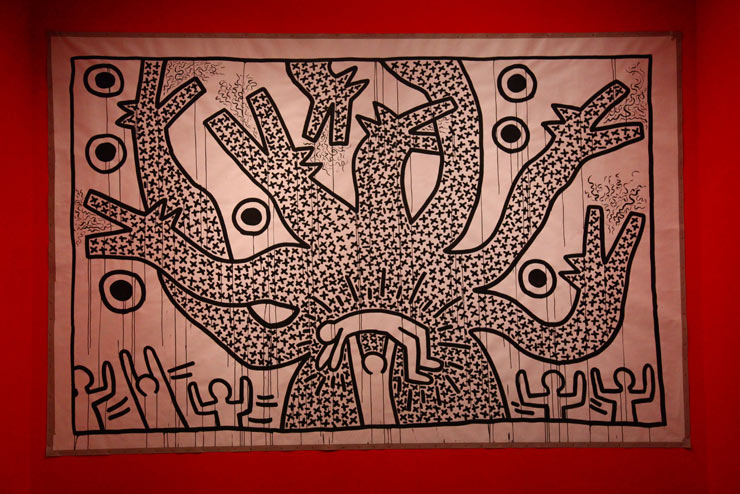
Keith Haring. Untitled, 1982. Courtesy of and © Keith Haring Foundation. The Brooklyn Museum. (photo © Jaime Rojo
Keith Haring: 1978-1982, a traveling exhibition first shown in Kunsthalle Wien in Vienna and The Contemporary Arts Center in Cincinnati, introduces a period of his work not often examined, taking you up to the edge of the seemingly sudden international fame he experienced as artist, activist and public figure through the rest of the 1980s.
“Raphaela Platow, who was the original curator of this show, went into the archives and pulled out things that had basically just been sitting there, ” explained Tricia Laughlin Bloom, the project curator for the current show as she gave a tour this week before its opening at the Brooklyn Museum Friday.
At a time when the small-town boy was developing his visual vocabulary as an artist, Haring was also discovering himself as a man in the world and in a city that he found endlessly fascinating and worthy of exploration. Capturing his spirit of hands-on experimentation, the show is almost entirely comprised of works on paper with one collaborative piece on plywood with his contemporary Jean Michel Basquiat, paper collage, video, and documentary photos.
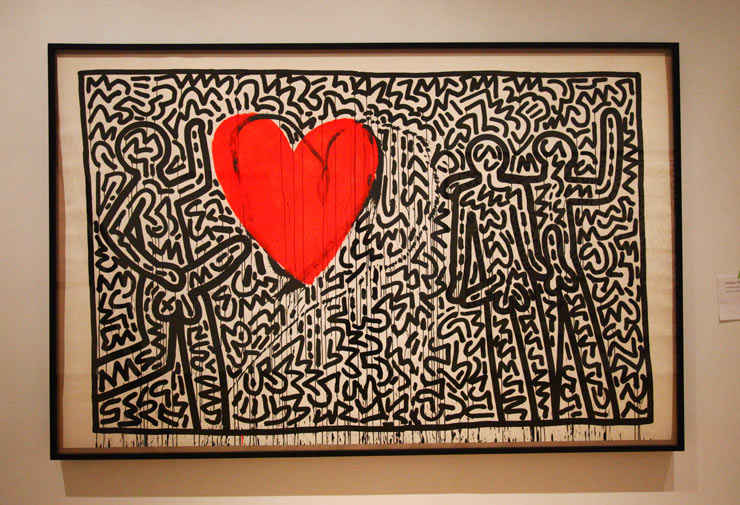
Keith Haring. Untitled, 1982. Courtesy of and © Keith Haring Foundation, The Brooklyn Museum. (photo © Jaime Rojo)
In these years Disco was on a full force collision course with Punk, New Wave, and Rap, and Haring was embracing the nightlife of a college student sampling the downtown scene, exploring his sexuality, and commandeering entire rooms at SVA to mount shows on paper. Some of those “body involvement” painting sessions are documented well here in video; a sort of full immersion painting baptism. While jamming out to music he covers every white surface with thick black symbols and gestural marking, sometimes painting with both hands in a rhythmic automatic study of both the physicality of the process and his own interaction with space and materials.
Not to be missed in person is the 30 piece collection in the final room of actual subway black papers that Haring adorned with his white line drawings, energetically created symbols and characters throughout stations in New York’s train system. The frames and glass protect them for us to appreciate them today in their disarming simplicity, their collection ironically alleged by some to be why the artist discontinued the subway practice. Equally compelling is the projected large slide show of Haring in photos by Tseng Kwong Chi, whom the artist called to shoot almost every time he did an illegal piece in the subway.

Keith Haring. Matrix, 1983. Courtesy of and © Keith Haring Foundation, The Brooklyn Museum. (photo © Jaime Rojo)
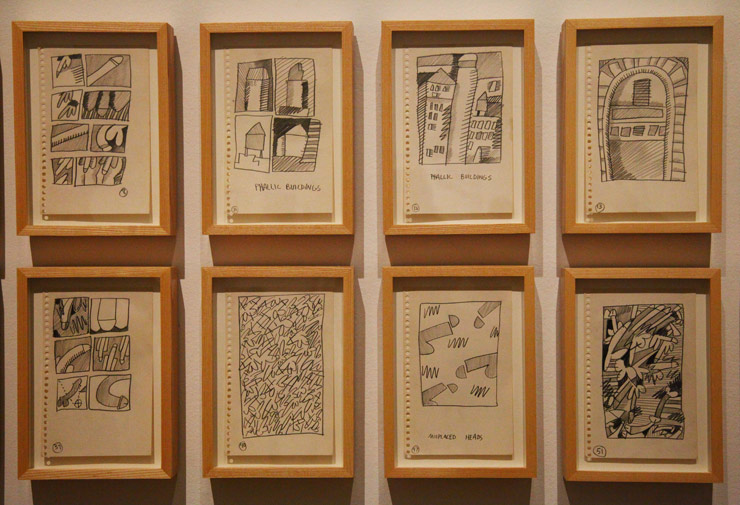
Keith Haring. Manhattan Penis Drawings for Ken Hicks, 1978. Courtesy of and © Keith Haring Foundation, The Brooklyn Museum. (photo © Jaime Rojo)
With almost half of the pieces here never displayed publicly like this before, the show is a welcome revelation for fans hoping to peel back a little of the hype-like gloss that time and opportunism may have shined his legacy with. Whether it’s his hand-collaged flyers for the indie group shows he curated, his home movies of Klaus Nomi and Joey Arias performing in the living room, or the complete re-installation of a wall from his 1980 show at PS 122, you get the idea that this was an audacious observant art student gulping at the faucet of life in a pulsating dirty city that welcomed him.
“He’s such a thoughtful and complicated figure – at the same time with that really pure impulse of not wanting to alienate people but to bring them in,” says Laughlin Bloom as she describes the young artist she discovered en route. “He’s this combination of fun-loving, and life-loving, and intellectual, accessible – a total populist but not in an insincere way.”
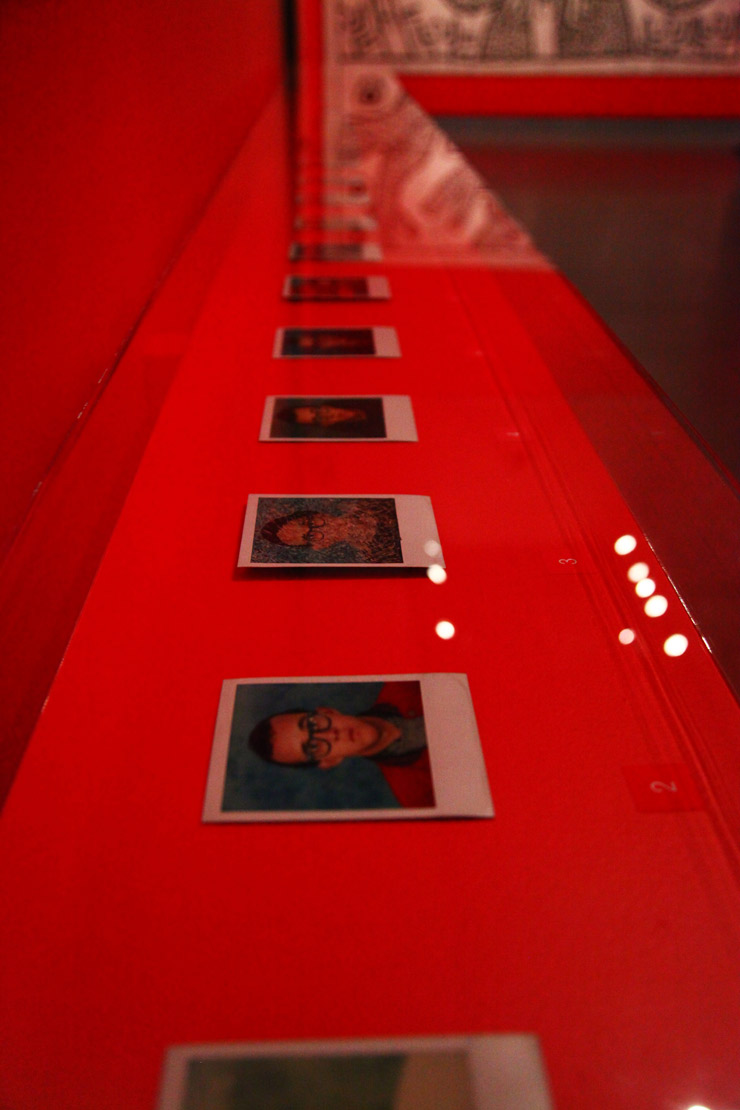
Keith Haring. Twenty Polaroid self-portraits with glasses painted by Kenny Scharf and Peter Schuyff, 1979-82. Courtesy of and © Keith Haring Foundation, The Brooklyn Museum. (photo © Jaime Rojo)
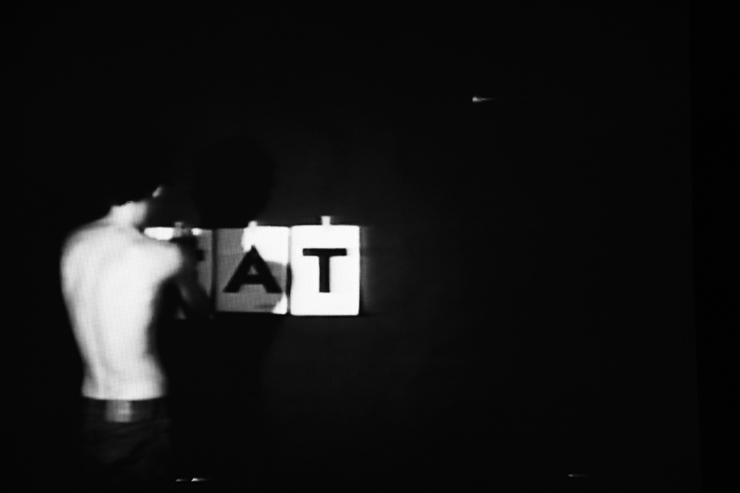
Keith Haring. Still from Lick Fat Boys. April, 1979. Vide0 3 min. Courtesy of and © Keith Haring Foundation, The Brooklyn Museum. (photo © Jaime Rojo)
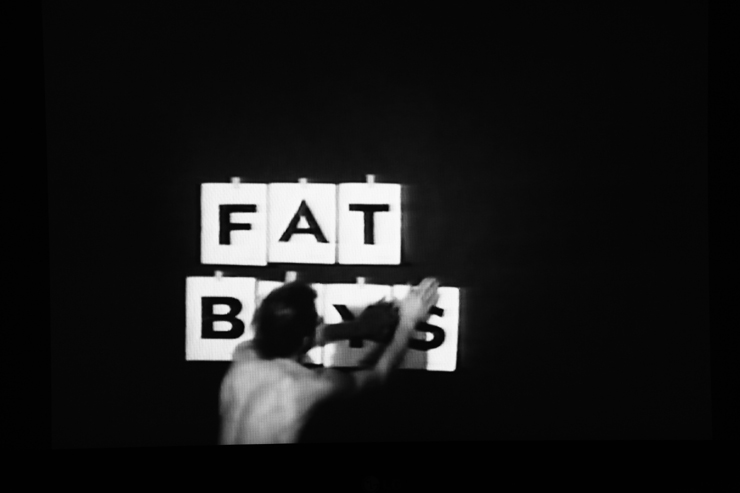
Keith Haring. Still from Lick Fat Boys. April, 1979. Vide0 3 min. Courtesy of and © Keith Haring Foundation, The Brooklyn Museum. (photo © Jaime Rojo)

Keith Haring. Still from Lick Fat Boys. April, 1979. Vide0 3 min. Courtesy of and © Keith Haring Foundation, The Brooklyn Museum. (photo © Jaime Rojo)
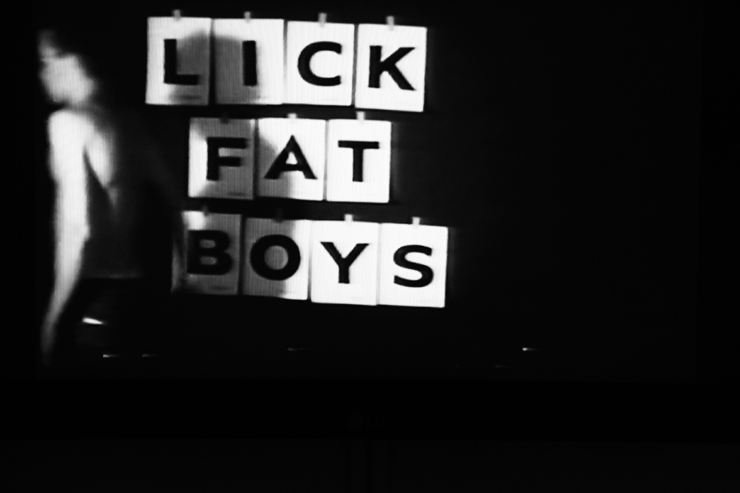
Keith Haring. Still from Lick Fat Boys. April, 1979. Vide0 3 min. Courtesy of and © Keith Haring Foundation, The Brooklyn Museum. (photo © Jaime Rojo
After 1982, Haring’s entire visual language of characters and symbols would become iconic, international; his work in dialogue with modern art history and everyday people eventually outlasted him to inspire a diverse generation of artists working on the street from Shepard Fairey and Swoon to Stikman and Specter, among many others.
“Haring saw the subway as the ideal platform for showing work – one of the few places to catch New Yorkers off-guard,” says Poster Boy, a Street Artist/collective who is credited/blamed for re-engineering and culture jamming subway posters with a razor in very recent years. Speaking of Haring’s chiding of corporate commercialism in the culture, Poster Boy observes, “For advertisers it’s the perfect opportunity for a commercial break. Haring saw it as a break from commercials.”
Respected for his early interest in busting down barriers in social activism, street art, and illegal art, it’s likely that many on the Street Art scene today will be checking out the pre-buzz Haring on display at this show. At the moment, it feels like one of New York’s adopted hometown heroes is back in Brooklyn.
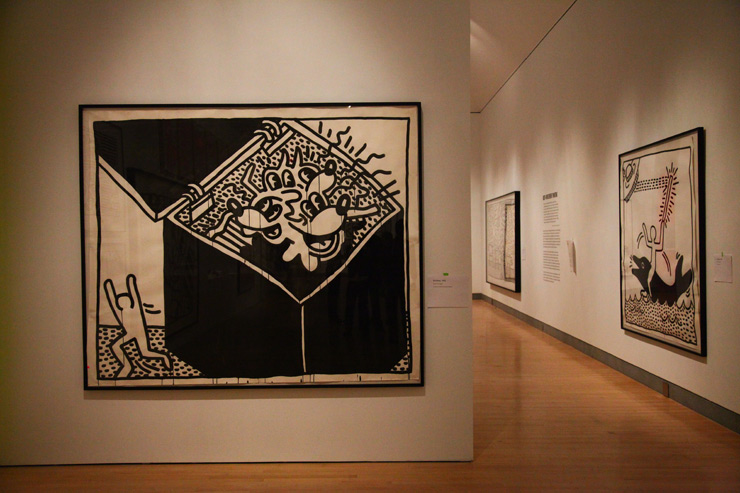
Keith Haring. Untitled, 1982. Courtesy of and © Keith Haring Foundation, The Brooklyn Museum. (photo © Jaime Rojo)
“Art is for everybody. To think that they-the public- do not appreciate art because they don’t understand it, and to continue to make art that they don’t understand and therefore become alienated from, may mean that the artist is the one who doesn’t understand or appreciate art and is thriving in this “self-proclaimed knowledge of art” that is actually bullshit.” 1978
– Keith Haring Journals

Keith Haring. Cipher chart, 1971-73. Courtesy of and © Keith Haring Foundation, The Brooklyn Museum. (photo © Jaime Rojo)
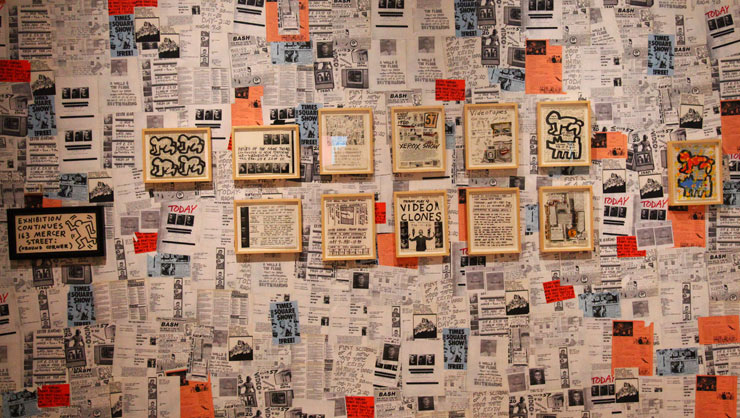
Keith Haring. Wall papered with reproductions of hand collaged flyers to advertise shows that Keith Haring curated, 1981. Courtesy of and © Keith Haring Foundation, The Brooklyn Museum. (photo © Jaime Rojo)
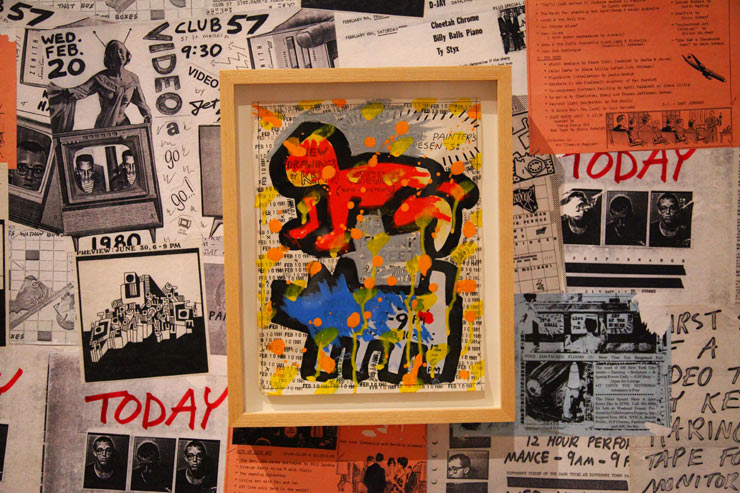
Keith Haring. Detail. Courtesy of and © Keith Haring Foundation, The Brooklyn Museum. (photo © Jaime Rojo)
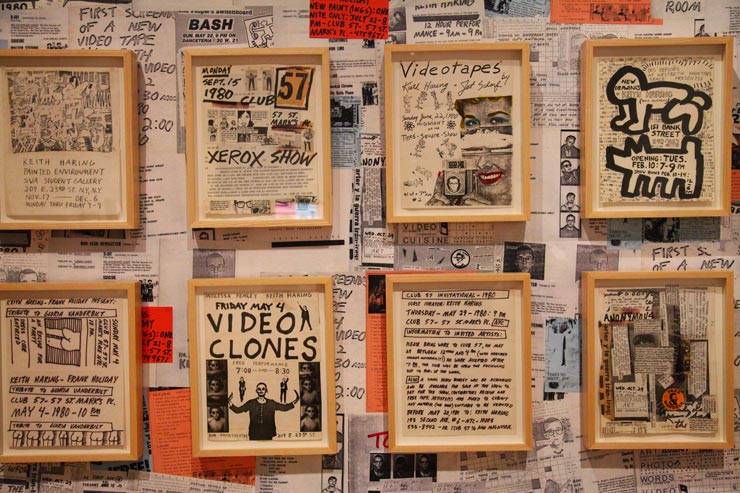
“These are flyers from 1981 – an aspect of his production that maybe people aren’t aware of. He did a lot of organizing shows in alternative spaces and curating 24 hour exhibitions, xerox exhibitions, neon exhibitions, open-calls for artists where they show your work for 24 hours and then it’s taken away. He designed these – the framed works are the originals of the collages and posters that he did for these shows,” Tricia Laughlin Bloom, the project curator for the show. Keith Haring. Detail. Courtesy of and © Keith Haring Foundation, The Brooklyn Museum. (photo © Jaime Rojo)
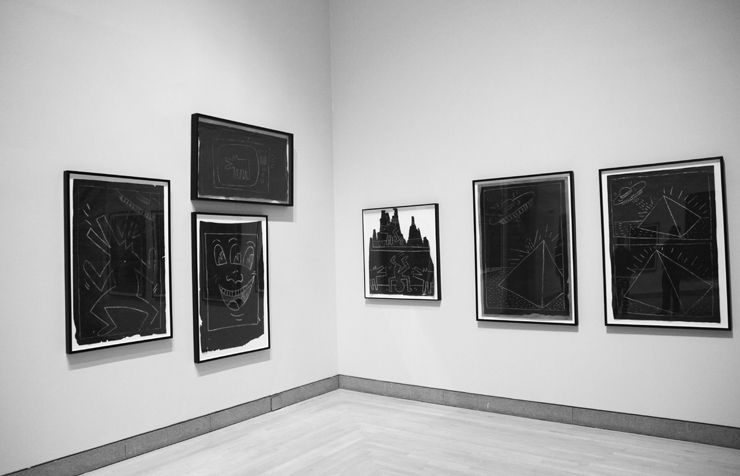
Keith Haring. Thirty untitled subway drawings, 1980-85. Private Collection. The Brooklyn Museum. (photo © Jaime Rojo)
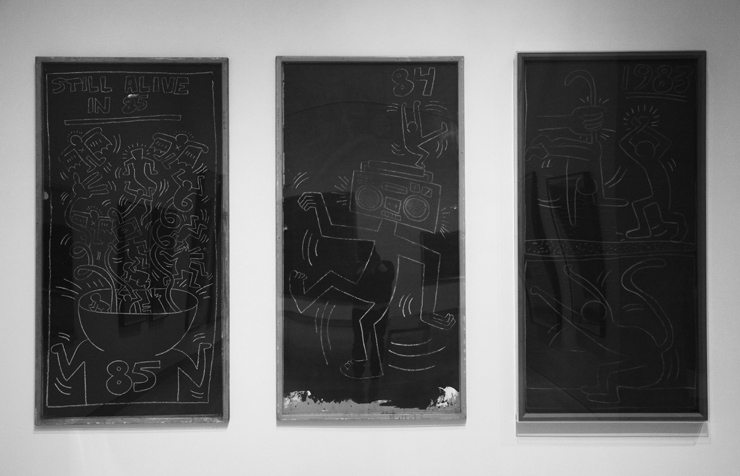
Keith Haring. Thirty untitled subway drawings, 1980-85. Private Collection. The Brooklyn Museum. (photo © Jaime Rojo)
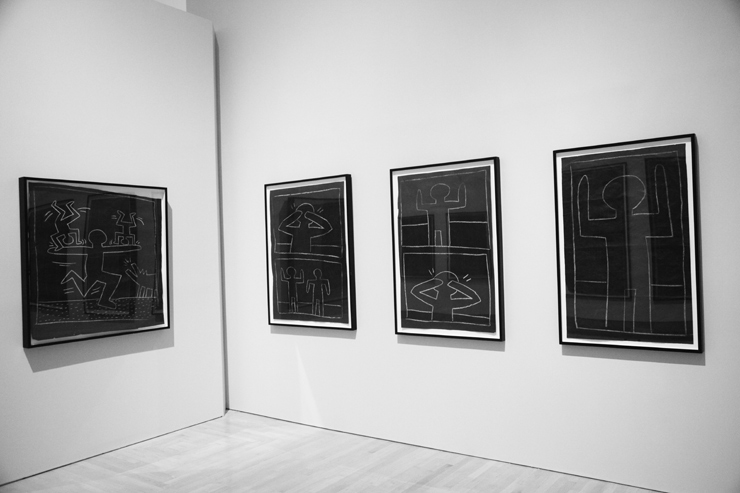
Keith Haring. Thirty untitled subway drawings, 1980-85. Private Collection. The Brooklyn Museum. (photo © Jaime Rojo)
With special thanks to Tricia Laughlin Bloom, Sharon Matt Atkins, Sally Williams, Marcus Romero, Matthew Branch, The Brooklyn Museum, and the Keith Haring Foundation.
 BROOKLYN STREET ART LOVES YOU MORE EVERY DAY
BROOKLYN STREET ART LOVES YOU MORE EVERY DAY